Antipyretics for children are prescribed by a pediatrician. But there are emergency situations for fever when the child needs to be given medicine immediately. Then the parents take responsibility and use antipyretic drugs. What is allowed to give to infants? How can you bring down the temperature in older children? What medicines are the safest?
Probably everyone is familiar with the feeling of numbness in any part of the body.
Certain areas of the skin seem to tighten, an unpleasant tingling sensation is felt, a temporary loss of sensitivity, a sensation of “running goosebumps”, slight itching and heaviness.
Causes of numbness in the left leg
It’s one thing when numbness is a consequence of an uncomfortable posture. In this case, all disturbing sensations pass within ten minutes and are quickly forgotten, just change your position.
However, the causes of numbness in the left leg can be much more serious - migraine, osteochondrosis, intervertebral hernia, problems in the circulation of the extremities, diabetes mellitus, prolonged deficiency of vitamins and minerals, especially B vitamins and magnesium, ischemia and osteochondrosis, compression of the nerve in the groin area, damage nerve as a result of diseases that deform joints ( rheumatoid arthritis, For example). Multiple sclerosis And oncological diseases spine lead to a feeling of numbness in the toes and the entire limb. As you can see, such a seemingly harmless symptom is worth paying attention to. Especially if numbness in your left leg occurs several times a day. Separate group- These are pregnant women. They have numbness and cramps in the left and right foot, as well as hands, may be a consequence of fetal pressure and pinching of nerve roots.
Pathogenesis
Due to damage to nerves or blood vessels in a certain area of the body, the patient complains of a periodic decrease in sensitivity, tingling, numbness of the left arm and leg, and temporary loss of ability to use the limb. As the disease worsens, the symptoms progress, and discomfort may accompany the patient throughout the entire waking period. Sometimes a feeling of numbness in the left foot is accompanied by sharp pain, which passes within a few minutes. The recovery process is long. A set of therapeutic measures is aimed at removing the cause of damage to nerves and tissues.
Symptoms of numbness in the left leg
First light, then increasingly increasing sensations of squeezing, squeezing, tightening of the skin, “goosebumps”, tickling. Complete or partial temporary inability to control a limb. Feeling of heaviness and “unliftability”. Loss of sensation and numbness in the toes of the left foot, ankle, and knee. Reduced response to mechanical stimuli. There are cases when numbness of the limbs occurs in a state of fear and shock. The person experiences rapid, labored breathing and mild convulsions. calf muscles. Frequent complaints from patients with similar symptoms often sound like this:
- "Woke up from severe pain in the leg. Within half an hour everything was numb. left leg- from the knee to the groin."
- “The cramps and numbness in the calf of my left leg give me no rest every evening.”
- “My left leg hurts a lot from the heel to the buttocks. When I lie down, the pain intensifies and my leg goes numb.”
- “The soles of the feet often go numb and even feel like they’re burning”
- “The fingers become very numb, starting with the little toes of the left and right feet. When I walk around, it goes away"
Complications and consequences
The consequences of numbness in the limbs are quite serious.
If you do not pay attention to this seemingly harmless symptom, then the matter can end sadly - from circulatory disorders to partial gangrene. Be that as it may, do not forget that numbness in the toes of the left foot, ankle, knee is always a consequence of impaired innervation and poor blood circulation. And this is a serious reason to undergo examination.
Diagnosis of numbness in the left leg
When a person comes to the clinic and complains of numbness in the little toe of the left foot followed by the entire limb, for a good doctor this is a reason to write a referral for an MRI, X-ray of the spine in the lumbar and sacral regions, ultrasound. With these research methods, it is possible to detect the most common causes of discomfort - intervertebral hernias, poor vascular condition, or hidden tissue damage. If these methods do not identify the cause, then complex analyzes in order to identify diseases such as diabetes, spinal tuberculosis or oncology. Make a diagnosis based only on subjective feelings and patient complaints are impossible, which is why a wide range of diagnostic methods are used.
Treatment for numbness in the left leg
Treatment of numbness of the extremities is aimed at eliminating the cause of the symptoms and is carried out according to the established diagnosis. In some cases, surgical intervention is indicated for intervertebral hernias and tumors.
In non-surgical treatment of intervertebral disc herniation, significant relief can be brought by the use of non-steroidal (and in severe cases, steroidal) anti-inflammatory drugs. For example, Voltaren in tablet form. This drug quickly relieves inflammation around the affected area, reduces pain and has proven itself in the treatment of people with diseases of the spine and joints. Contraindications to the use of this drug are: peptic ulcer stomach and intestines, as well as chronic kidney damage. Ibuprofen is used as an ointment that will relieve discomfort in the limbs and improve microcirculation in tissues. Active ingredients ointments quickly penetrate deep into the tissue and have an analgesic and anti-inflammatory effect. Ointments should be used with caution if you are prone to allergies. For skin rashes and psoriasis, consultation with a specialist is necessary.
Contrasting baths give a good effect. To do this, prepare two convenient containers of sufficient depth. Pour tolerably hot water into one of them, and into the other - as cold as you can tolerate. Alternately lower your legs into one container or another, holding them for 20-30 seconds. Repeat the procedure 5 times. When finished, lubricate your feet with turpentine ointment and put on warm woolen socks. As a result, sensitivity will be restored and pain will decrease.

Exercising improves blood circulation and can significantly alleviate the patient’s condition. However, in any case, it is necessary to consult with your doctor - diseases and injuries of the spine require a special kind of physical activity.
You will greatly help your blood vessels if you completely give up smoking. The consumption of alcohol, strong tea and coffee should be reduced. The condition of the blood vessels will improve due to the fact that their walls will no longer be thin and brittle. At the same time, it is recommended to take Ascorutin tablets - they have a positive effect on the elasticity of capillaries.
It is necessary to introduce a sufficient amount of foods containing B vitamins into the diet - turkey meat, cottage cheese, liver, broccoli, fresh vegetables and fruits.
Wiping with a damp woolen cloth will also help cope with the unpleasant sensations of tingling and numbness in the lower leg of the left and right leg. This activates nerve endings and improves blood circulation.
Medical Expert Editor
Portnov Alexey Alexandrovich
Education: Kyiv National Medical University them. A.A. Bogomolets, specialty - "General Medicine"
03.03.2005, 17:45
I have this question: what is the medical name for this sensation?
goosebumps, when, for example, a part of the body goes numb? And, if possible, please briefly explain in your fingers exactly why they occur, is it blood through the vessels or nerves? Sorry for asking such maybe stupid questions, but I’m already tormented with these goosebumps in my legs. I don’t have any stiffness, I sit or lie quietly, and they arise.
I don’t know if one is connected with the other, but I also feel some kind of tightness in my chest or throat...
If you're interested, here was my topic here ([Only registered and activated users can see links])
Thank you.
03.03.2005, 19:52
So goosebumps or cramps? These are different things. What you are describing now resembles a depressive-phobic disorder.
03.03.2005, 20:36
I already wrote in your topic that you need to consult a psychiatrist - Algor is absolutely right, this really looks like a depressive disorder.
04.03.2005, 01:20
a feeling of goosebumps, as if you had served time - this is paresthesia. Judging by how you were treated and the organic basis of this condition was ruled out, you have to independently look for a way to further recovery. Don't be afraid of psychotherapists, they are kind:eek:
And so - simply put - go in for sports within reasonable limits. This promotes the outflow of blood from the brain and internal organs, and its inflow to actively working muscles. Take a ride on Medeo. The head will not be filled with bad thought processes and the muscles in the legs will be fine. I hope I explained everything clearly.
Sincerely
neurosurgeon
Nergadze O.N.
"Clinic of Minimally Invasive Neurosurgery", Moscow
06.03.2005, 12:04
Thanks for answers!
So goosebumps or cramps? At first there were convulsions, but now they are gone; I described that situation in another topic. I made a separate topic, but do you think that these are not separate symptoms, but the development of the same disease? Can it be so?
Take a ride on Medeo. The head will not be filled with bad thought processes and the muscles in the legs will be fine. Yes, Medeo is certainly wonderful!
But can depression be expressed in purely physical manifestations? Honestly, I doubt that the psychotherapist will help me, persuade me not to get sick? I would like to rule out other reasons. I was advised to have an EMG, but in our city of one and a half million people there is NO such research! How, besides EMG, can more serious diseases be excluded? And the neurologist didn’t even mention that this study needed to be done. Prescribes me some kind of vascular drugs and forbids me to read the Internet!
In general, my diagnosis is protrusion. Could these be symptoms of this particular disease?
Sorry, maybe I'm rambling and writing a lot, but this all really stresses me out!
Thank you.
06.03.2005, 15:12
But can depression be expressed in purely physical manifestations? Honestly, I doubt that the psychotherapist will help me, persuade me not to get sick? Thank you.
Definitely yes. It's called masked depression. To exclude, a consultation with a psychiatrist is necessary. No one will persuade you - if this mental disorder, You will be treated.
18.03.2005, 12:34
If you're interested, I'll write down the developments. I already consulted with a new neurologist and they advised me. He also diagnoses astheno-depressive syndrome. Thus, Algor and kobik are probably right. The doctor prescribed me fevarin. But I don’t feel much change. The goosebumps stopped, but convulsive contractions of the leg muscles began again, this happens when I lie down, the muscles immediately tense up when I straighten my legs. And also a constant squeezing in the throat, as if something was pressing on the neck. Well, is THIS really what depression is???? Could this be from fevarin?
Thank you.
18.03.2005, 19:46
18.08.2005, 01:18
This should not happen from fevarin.
In order for you to feel the antidepressant effect, the medicine must be taken for three to four weeks with a possible increase in dosage under the supervision of your doctor. If there is no effect, the antidepressant is replaced with another.
The symptoms you describe are due to muscle tension due to increased anxiety. You may additionally need to take some kind of tranquilizer to relieve these symptoms before the effect of the antidepressant occurs. Consult your doctor.
You know, doctor, if all diseases could be treated with antidepressants, it would be heaven! Fortunately, when as a child I was afraid to go to bed and stretch my legs because they were cramping, my parents took me not to a psychiatrist, but to a neurologist! And the reason for this was a neurological disease.
In his life, every person at least once felt vague feelings in his body: squeezing, goosebumps, tingling, fleeting pain, etc. Many people think that these are just feelings caused by work. nervous system. And some may get scared and start thinking that they are unhealthy. Everyone here will be right in their own way, because it is the impulses in the nervous system of the body that carry all our pain and other feelings.
The lumbar spine is responsible for the innervation (connection with the central nervous system) of the lower extremities or simply legs. spinal cord. Any injuries that occur in this area will primarily affect the functioning of the legs, toes and the sensitivity of the skin in that area.
The sensation of tingling or goosebumps in our body is called paresthesia, but for such sensations in the upper and lower limbs There is a more specific name - acroparesthesia.
Doctors still cannot identify the exact cause of such phenomena. In the case of illness, the connection between the problem and sensations is obvious, but when a person is healthy and such sensations are present, then research is currently being conducted in this area.
Tingling toes are usually characterized by clear symptoms. In addition to the tingling itself, the following symptoms may be observed:
- Feelings of burning, pins and needles, numbness, squeezing, tingling in the legs or tingling in the toes;
- These sensations are most often unpleasant, bring discomfort and sometimes reach the level of pain;
- Observed continuously for a long time or occur strictly after a certain mechanical effect on the body (long stay in the same position, bruise, tooth extraction, etc.);
- Change in skin color (pallor) at the site of tingling or body temperature.
Mechanism of occurrence
The fact is that any impact directly on the nerves or spinal cord causes tingling in the legs. For example, if compression of the nerves in the spinal column occurs, then nerve impulses may “not reach” the desired organ or, conversely, be excessive, i.e. bring pain.
In case of injury or mechanical impact (compression, tickling, bruise, etc.) on a superficial nerve, a disturbance occurs in the behavior of nerve impulses, which cause the transmission of sensations to organs and muscles. All this can cause tingling in the legs, the causes of which are due to impaired blood supply to one or another part of the nerve pathway.
Why might such sensations occur?
- Malignant and benign neoplasms of the spinal cord, spine, nervous tract, muscle tissue, organs;
- Intervertebral hernias, significant curvature of the spine, osteochondrosis;
- Injuries to the lumbar region or muscle and nervous tissue (nerve damage) of the lower extremities;
- Diabetes;
- Atherosclerotic disorders, especially in the elderly and old age;
- Multiple sclerosis;
- Diseases of the hormonal system;
- Diseases from the side of cardio-vascular system (ischemic disease heart, initial signs of stroke, low arterial pressure etc.);
- Symptom of the following syndromes: carpal tunnel syndrome, polyneuritis, acromegaly, etc.;
- Age-related changes in the structures of muscle and nerve fibers, joint diseases, blood vessels or the blood itself;
- Disorders of the neurotic circle (neuroses, panic attacks, psychosomatic diseases);
- Chronic or acute stress;
- Poor blood circulation or nerve activity due to a sedentary lifestyle;
- Goose bumps in the legs can also be a consequence infectious diseases(meningitis, polio, encephalitis, etc.);
- The presence of an autoimmune or neurodegenerative disease (Alzheimer's disease, Pick's disease, Harrington's disease, Graves' disease, myasthenia gravis, lupus erythematosus, vasculitis, Hashimoto's thyroiditis, etc.);
- Intoxication medicines, alcohol, drugs, heavy metals, etc.;
- Vitamin deficiency (lack of calcium, magnesium, potassium, vitamins B and D).
To begin with, you should contact a general practitioner, who will collect your complaints and data from the anamnesis (life history and diseases), prescribe general analysis blood and urine, and only then will he be able to tell whether it is worth contacting another specialist. Most often, for these symptoms, the patient may be referred to:
- Neurologist;
- To the surgeon;
- Traumatologist;
- Endocrinologist;
- Immunologist;
- Oncologist;
- Allergist;
- To a psychotherapist.
Depending on the blood test, the specialist will look for the main cause of the disease. Additional blood tests may be needed, such as blood sugar, cholesterol, allergen, or autoimmune disease. It is mandatory to carry out an ECG and ultrasound of the heart, an X-ray of the spine, and they may also prescribe such additional research, such as: MRI of the brain, the entire spine or only the lumbar region, as well as the pelvis of the legs and feet, Dopplerography of the vessels of the neck and brain, EEG of the brain, lumbar puncture and cerebrospinal fluid analysis.
It is possible that you will be referred to a psychotherapist, in which case the cause of discomfort disturbances lies in your psyche. First of all, the effect of stress on your body; it often happens that it is they that disrupt its functioning. Also, similar symptoms occur in a number of psychosomatic disorders, not only as a reaction to stress, but also, for example, as a reaction to psychological trauma, family conflict, personal grief, etc. In fact, our body is much smarter than our mind, and in the case of various conflicts tells us that it’s time to rest or change tactics in this or that matter.
In the psychosomatic picture of the disease, symptoms such as paresthesia of the legs and feet may indicate that the patient is not moving where he wants - literally and figuratively. Try to analyze for yourself when these painful sensations occur in your legs. Is it at the moment when you need to go to a job you don’t like or an upcoming meeting with a person you don’t like? If the answer is yes, then the problem should be solved with a psychotherapist or psychologist.
Treatment and prevention
The treatment plan will depend entirely on the cause of the disease. If it is a tumor, then it should be treated surgically or conservatively (chemotherapy, etc.). If this intervertebral hernia, you may also need surgery or physical therapy. In the case of an infectious, autoimmune or other disease, it should be eliminated first. For diseases and injuries that affect blood circulation, it is necessary to take medications that stimulate blood flow in the body. With age-related changes in neuromuscular tissue, joints and blood, maintenance therapy or medications that eliminate the main symptoms are possible.
In addition, it is recommended to use folk remedies in the fight against paresthesia, the main thing is that such treatment should be carried out under the supervision of a doctor and taking into account all indications and contraindications. For example, in most cases, a foot massage is necessary, which will help normalize blood flow to the muscles and improve the conduction of nerve impulses. In some cases it will be contraindicated, for example, with an intervertebral hernia.
It is often recommended to take cold and hot shower: change the water temperature from very hot to icy. It also normalizes blood circulation, strengthens the walls of blood vessels and strengthens the body.
In the case of a psychosomatic disorder, a psychotherapist may prescribe mild tranquilizers, sedatives, physical exercise, normalization of sleep-wake patterns and psychotherapy.
If you discover similar symptoms in yourself, you need to track the frequency and strength of their occurrence, whether there is a clear reason after which these tingling sensations occur. If you understand that the reason is a sedentary lifestyle or an uncomfortable mattress, due to which your spine is tense during sleep, then you can cope with the symptoms on your own. Move more, don’t sit in one position for a long time, buy an orthopedic mattress and a good pillow, consume enough vitamins. If you feel that the symptoms do not disappear after changing your lifestyle, then you should contact a specialist who will conduct all the necessary examinations.
February 19, 2015
The phenomenon of goose bumps in the legs is called “goose bumps”, since the surface has a similar appearance. This condition occurs due to fatigue, poor circulation, after taking a bath, being in the cold for a long time and irritation. nerve endings. It can be chronic, associated with some disruption of the normal functioning of the body. In this case, an urgent consultation with a neurologist is required.
Patient complaints
When visiting their therapist, patients begin to describe the following complaints:
- The goosebumps in the legs constantly move, sometimes even to the spine and head. Sometimes there is a feeling of coldness in the extremities.
- The occurrence of tickling, which is more pronounced immediately before bedtime.
- The goose bumps running down your legs begin to move to other parts of your body.
- Goose bumps periodically appear from the ankle to the knee.
- Goose bumps are observed when you touch the surface of your legs with your hand.
Sometimes the feeling of pins and needles in your legs begins to seriously bother you. If a small rash begins to tingle in the place where the limbs are numb, then perhaps in this case you have simply pinched the capillaries. After freeing your legs, everything will return to normal in a few minutes.
Who to contact?
Sometimes goosebumps in the legs are accompanied by numbness in the limbs. If you have constant complaints associated with frequent unpleasant sensations, for example, tingling, then until this discomfort develops into any complex disease, you should consult a doctor for help to determine the cause. It is better to start with a visit to a therapist, who will establish a preliminary diagnosis and advise which specialists should be contacted. 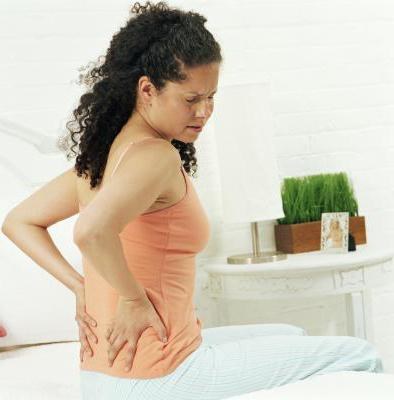
What does “goose bumps” mean?
Do you have goosebumps on your legs? The reasons lie in the nervous and vascular systems of the body. Experts identify the most common reasons for this feeling:
- Inflammation of the sciatic nerve, which occurs due to complications of spinal osteochondrosis. In this situation, you cannot do without the help of a neurologist.
- Intervertebral hernia, which is accompanied by numbness of the limbs. At this time, the patient may feel goosebumps running down his legs and tingling in his fingertips.
- Elevated blood sugar levels negatively affect the condition of blood vessels. Diabetes is a very serious disease that is not easy to cope with.
- Increased blood cholesterol levels, which are most often associated with an unhealthy lifestyle. When a person drinks a lot of alcohol, fatty foods and leads a sedentary lifestyle, the condition of the walls of his blood vessels becomes much worse: they thicken, and therefore become less elastic.
To avoid complications, you will need to consult a neurologist.
Impaired blood circulation and loss of vascular elasticity are not so difficult to develop if you do not follow the rules healthy eating and lead a sedentary lifestyle. Smoking and drinking alcohol are common causes of pins and needles in the legs. 
"Goose bumps" and tingling sensations during sleep
This condition does not always signal a disease. Incorrect body position can cause pins and needles and tingling sensations on the legs. For example, standing in the same position for a long time or having a pillow that is too low during sleep has a bad effect on the neck muscles, which causes swelling. Also, the uncomfortable position of the legs causes tingling and numbness due to the fact that you have pinched the blood vessels, and blood circulation has worsened for a while. But still keep in mind that prolonged and persistent pins and needles in the legs and arms are a sign of the presence of blood clots in the arteries.
During pregnancy, swelling and goose bumps are not uncommon. This is due to hormonal changes and changes in metabolic processes in the body. future mother. In this case, specialists give the woman recommendations on consuming foods containing iron. ![]()
Osteochondrosis
Tingling, goosebumps and numbness in the legs are symptoms of spinal osteochondrosis. They occur due to irritation of the nerves. The sensitivity of the legs decreases, dizziness appears and lower back pain is possible. The neurologist prescribes complex treatment with medications to the patient, gives directions for massage, physical therapy and warming up the damaged area of the spine. In severe cases, surgery is possible.
Consequences if left untreated
If you ignore the signal about disruption of the nervous and vascular systems, which manifests itself in the form of goosebumps, complications may arise:
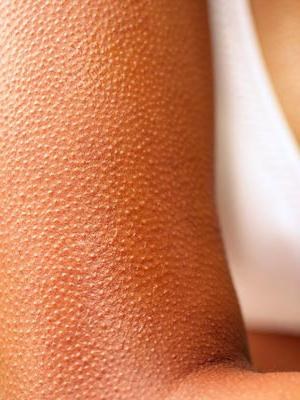
Treatment
Before prescribing treatment, the doctor must find out why goose bumps are running down your legs. The reasons for their occurrence, as we have already said, can be different. After collecting all the analyzes and conducting a series of laboratory research The doctor prescribes the necessary medications, which are selected individually for each patient, and then refers them to a specialist. It is not recommended to begin independent treatment without consulting a neurologist.
Therapy at home
In addition to inpatient observation, treatment can be carried out at home. It is recommended to discuss this with your doctor in advance before proceeding with the procedures in order to eliminate any possible negative consequences.
Methods for treating goose bumps
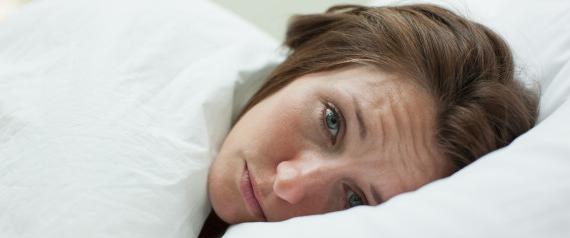
The sooner you conduct an examination and find out the reason for the appearance of goosebumps in your legs, the faster you can get rid of them and prevent the occurrence of complex diseases. By following a diet, leading a healthy, active lifestyle and giving up bad habits, you will speed up your recovery. There is no need to postpone treatment indefinitely, as this can lead to disastrous consequences.
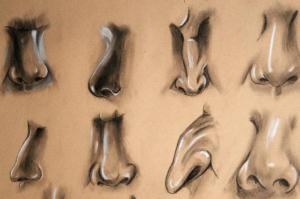
What does the shape of your nose say about your personality? Many experts believe that by looking at the nose, you can tell a lot about a person's personality. Therefore, at the first meeting, pay attention to the nose is unfamiliar.

7 Things You Should Always Keep Secret Even if you love communicating with people, there are some topics that you should never discuss with anyone.

Terribly beautiful: 15 shocking plastic surgery, which ended in disastrous Plastic surgery among the stars remains incredibly popular to this day. But the problem is that in the past the result was not always ideal.

7 Body Parts You Shouldn't Touch with Your Hands Think of your body as a temple: you can use it, but there are some sacred places that should not be touched with your hands. Research showing.

19 celebrities who looked completely different before gaining popularity World celebrities, whose images millions of fans are now raving about, used to look completely different. Our ideal idols had enough money.
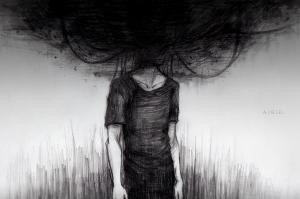
7 Things People with Hidden Depression Do People who suffer from depression are fairly easy to spot: they may be gloomy, sad, and lethargic. But what can be said about those who suffer?
http://fb.ru
- Relieving the feeling of goosebumps in your legs
- Effective treatment for tingling toes
- 10% discount when purchasing a course of treatment
Goosebumps, pins and needles, burning and other similar sensations in the lower extremities are one of the common types of sensitivity disorders - paresthesia. This condition usually occurs from tired legs, after taking a bath, due to temporary disruption of blood supply or mechanical irritation of the nerve and is most often transient. However, paresthesia can also be chronic. In this case, it most often occurs as a result of all sorts of serious disorders and already requires serious treatment.
Causes of tingling and goosebumps in the leg
Tingling sensations that arise for no apparent reason, sensations like goosebumps running down the leg, burning in the lower extremities most often indicate a disruption of the innervation of blood vessels and soft tissues due to damage to different parts of the nervous system.
Neurologist of the highest category,
reflexologist
Medical experience - 17 years
- collect anamnesis
- will carry out palpation diagnostics
- will analyze the research results
- If necessary, will provide directions for additional research
- will make a diagnosis
- will prescribe an individual course of treatment
Thank you! Your application is accepted!
Special promotions:- After undergoing an MRI in our clinic, the cost of a consultation with a neurologist: 1500 1000
This may be due to both infectious and tumor lesions of the nervous system, as well as autoimmune and neurodegenerative processes. Thus, tingling and burning in the extremities are one of the first symptoms of the development of multiple sclerosis.
However, the most common damage occurs peripheral nerves– polyneuropathy is a phenomenon most characteristic of diabetes, alcoholism, work disorders thyroid gland, HIV and severe poisoning.
Polyneuropathy is characterized by tingling in the legs, like needles, burning, pins and needles, decreased or increased tactile sensitivity in the legs, which are also accompanied painful sensations. This condition requires urgent treatment medical care and prescribing comprehensive treatment of the entire nervous system.
Why do you feel pins and needles in your legs?
The cause of pins and needles in the legs can be various disorders of arterial or venous blood flow in the legs. Burning and tingling are caused by:- obliterating atherosclerosis,
- thromboangiitis obliterans,
- embolism and arterial thrombosis,
- chronic venous insufficiency,
- thrombophlebitis of superficial and deep veins,
- phlebeurysm,
- changes in the walls of blood vessels in diabetes mellitus.
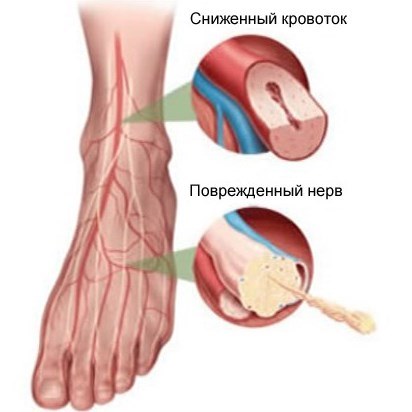
Damage to the arteries and veins requires immediate consultation with a doctor and serious treatment that will prevent further progression of the disease. In the absence of adequate therapy, there is a high probability of developing gangrene, in which amputation of the lower limb is indicated.
Experienced neurologists provide consultations at the MART clinic.
http://www.martclinic.ru
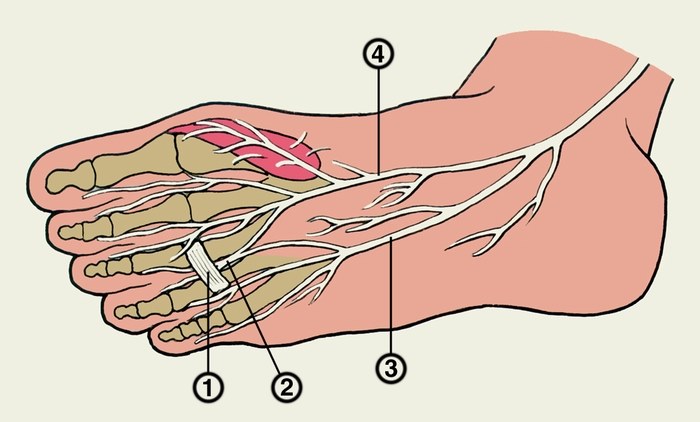 Pain and numbness in the legs may also occur due to changes in lumbar spine. With numbness in the legs, there is a feeling of “crawling goosebumps”, pain in the legs, a feeling of “wobbly legs”. Numbness in the legs is often associated with impaired nerve sensitivity. Then alternately lower your legs or arms into cold and hot water for thirty seconds. Repeat the alternation procedure about 5 times; it is advisable to do this procedure in the morning and evening.
Pain and numbness in the legs may also occur due to changes in lumbar spine. With numbness in the legs, there is a feeling of “crawling goosebumps”, pain in the legs, a feeling of “wobbly legs”. Numbness in the legs is often associated with impaired nerve sensitivity. Then alternately lower your legs or arms into cold and hot water for thirty seconds. Repeat the alternation procedure about 5 times; it is advisable to do this procedure in the morning and evening.
Now there is a sharp weakness in the muscles of both legs when trying to move quickly (running across the road). Numbness of the legs. In 95% of cases, numbness in the legs is caused by problems associated with the spine, these are intervertebral hernias, pinched nerves, osteochondrosis and other spinal problems.
Numb toes
If your hands, feet or fingers are numb, massage helps; massage the numb limbs. People with poor circulation in the area of the fingers and toes are advised to eat foods rich in iron, as well as vitamins and microelements. Weakness in the legs is a symptom that sometimes indicates normal fatigue, but in some cases it may indicate pathology. Leg pain can appear in different areas: legs, feet, knees or fingers.
In what cases does numbness require a mandatory consultation with a neurologist? Numbness can turn into pain over time. To determine the place where compression occurs, the doctor conducts diagnostics. In some cases, numbness in the hands is associated with dysfunction of the spine. The syndrome occurs when tension causes the tendon to swell and compress the nerve that provides sensation to the fingers (thumb, index, and middle) and palm.
Often, even before signs of numbness appear, the patient begins to feel constant pain in the lumbar region. Less commonly, numbness in the legs is explained by other systemic diseases, such as diabetes. Can cause numbness in toes various diseases metabolism, for example, radiculoneuritis. Also, the cause may be spinal tuberculosis, osteochondrosis, in which there is a narrowing of the intervertebral spaces, various disorders in the blood vessels, and sometimes the development of a malignant tumor.
Tingling in the legs: causes
For the same reason, strong tea and coffee, as well as alcohol, are contraindicated for patients with numbness. Apply a thin layer of honey to the areas where numbness is often felt and wrap with a cotton cloth.
Why do my hands, feet or fingers go numb?
My left arm also goes numb from the elbow to the fingers when I lie with my arm bent at the elbow and placed on my stomach. I straighten my arm and the numbness passes through the appearance of goosebumps in my fingers. Then everything is normal. The vein or aorta is probably pinched in the elbow bend. Sometimes as a child I got goosebumps in my legs when watching movies in cinema halls.
A periodic trembling effect appeared in the little finger of the left hand and thumbs, even with minimal load. The pressure jumps to 160–80, sometimes it was 220 with a pulse of 60–90, but I can relieve it with Concor. Numbness is a loss of sensitivity and discomfort that is accompanied by tightness of the skin, as well as burning and tingling.
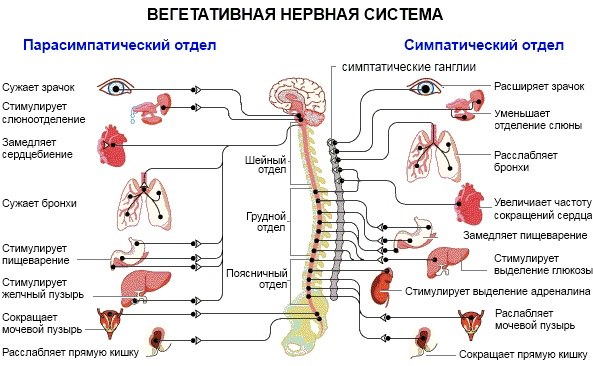
When to See a Doctor
Numbness often occurs when the body is in an uncomfortable position for a long time, but if numbness occurs too often, then this is a manifestation of symptoms of a serious illness. Numbness can occur frequently and for no apparent reason. If numbness of the limbs is accompanied by such symptoms, then this is a reason to seriously think about it and be sure to seek help from a specialist.
Numbness in the legs also occurs due to diabetes in humans. Recipes used in traditional medicine with numbness of the limbs. good remedy for numbness, contrast baths are used. We take two containers and put them into one cold water, well, to another hot one. You can rub a tincture of lilac flowers into numb limbs.
If your limbs are numb, it is better to avoid strong tea and coffee, as well as alcoholic beverages. If you experience numbness in your limbs, you know the reasons. If you experience numbness in your hands, feet or fingers, you should definitely seek help from a doctor. Watch your health. After all, numbness is a lack of blood flow, and it happens when you squeeze a vessel (lay it down, etc.), and when the heart simply cannot carry out normal blood circulation (vascular disease).
Folk remedies
All folk recipes cause increased capillary blood circulation, due to which the numbness “recedes”. Then my hand went completely numb and there was no sensitivity. If you experience weakness in your upper and lower extremities at the same time, the likely cause is pathology in the spine. Therefore, manifestations such as fainting and dizziness, weakness throughout the body are likely. It is not necessary to run to the doctor, you just need to eat right and get good rest.
Problems with the veins, which can cause the above symptoms, can be indicated by calming the pain when the leg is in an elevated position. If the pain disappears when you lower your leg, but appears when you raise it, your disease is related to the arteries. This is a symptom of damage to synapses - areas where nerves and muscles connect. When these connections are disrupted, muscle weakness occurs.
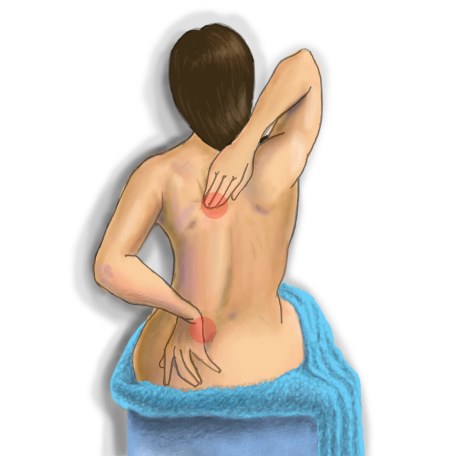
Then a connection failure occurs. Nerve impulse does not hit the muscle, which makes it weak, although muscle and did not die. These symptoms sometimes appear with hypoglycemia, that is, a pathology in which glucose is poorly absorbed in the body.
With constant low blood pressure, blood flow to the legs can become worse, causing weakness in the legs after waking up.
Therefore, the manifestations of hypoglycemia resemble symptoms of lack of oxygen in the body. A reduced amount of glucose in the blood causes the sympathetic nervous system to turn on, therefore the level of adrenaline and norepinephrine in the bloodstream increases.
It is better not to self-medicate even in very high temperature, because the consequences can be very, very serious. In some cases there is no pain, so the person is in no hurry to see a doctor, and the pathology keeps getting worse. The combination of these symptoms is possible in cases where you have not eaten for a long time. Weakness in the lower extremities can be combined with nausea when a person’s blood pressure “jumps.” If normal performance pressure dropped sharply, talking about hypotension.
If weakness and pain in the leg are combined with a feeling of numbness and “crawling”, then the reason lies in pathologies of the spinal column. Symptoms may also indicate disorders in the musculoskeletal system or nerves that are connected to the legs. Numbness can be combined with weakness in the legs with angiotrophoneurosis, which is the result of prolonged spasm of small arteries.
http://velnosty.ru
Alexander Lekomtsev. Experienced psychologist psychotherapist work online via Skype. Anxiety, phobias and many others.



